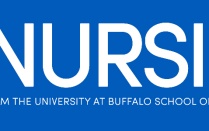Equity Does Not Equal Equality

Published October 27, 2017 This content is archived.
Tailoring health care to ensure that individuals receive equitable care
By Margaret P. Moss, Assistant Dean for Diversity and Inclusion, UB School of Nursing
A Latino or Hispanic person living in Western New York (WNY) is four times more likely to die from diabetes mellitus than a white person living in WNY.
With such gaps in care and health outcomes continuing to permeate our region (and beyond), the School of Nursing’s efforts to improve the health and wellness of our community is an integral part of our mission. Eliminating health disparities while enhancing health literacy with collaborative research efforts and education has rightfully become a national dialogue and the focus of many health care professionals.
In order to address health needs to improve outcomes, we must first increase awareness of the roles various factors – such as ethnicity, race, income, environment, health literacy/education and access – play in the inequity.
According to the New York State Department of Health’s (NYSDOH) Office of Minority Health and Health Disparities Prevention (OMH-HDP), health disparity is defined as “differences in health among groups of people” (2017). The groups of people may be variously from categories such as: racial and ethnic populations; rural residents; women, children and senior citizens; people with disabilities; lower socioeconomic groups; differing religious groups; lesbian, gay, bisexual and transgender individuals; and individuals and families experiencing mental illness. More complicated can be the intersectionality of people within the groups, who are members across two or more groups.
Disparity is not only acknowledged in health status and outcome (mortality and morbidity) differences among various patient populations, but is also recognized in areas of geographic access, cost and quality of the health care available to these populations.
In WNY, distinct health disparities exist – and health professionals and health professions schools must target services to begin to purposively close the gaps. One such gap, for example, is the racial and ethnic differences in patients with HIV/AIDS in WNY. Hispanics and African Americans make up approximately 13 percent of WNY’s population, but account for over 55 percent of people living with HIV/AIDS, according to Community Access Services (2013).
In Erie County, the largest county in WNY, there are 73 zip codes. Most patients (70+ percent) seeking care from the Erie County Department of Health clinic come from only five zip code areas (Erie County Department of Health, 2017), all located in the city of Buffalo, where poverty and other negative social determinants of health are directly related to poorer health outcomes. One particular zip code has high poverty rates and a predominantly African American population, as compared to other areas of Buffalo/Erie County, and reveals hospital admissions rates that are 150 percent over expectations. Indigenous Americans in these areas suffer from high rates of obesity, heart disease, diabetes and substance abuse. There are also high numbers of refugees in these geographic regions showing poorer health outcomes.
In NYS, many rural areas are burdened with health profession shortage areas – these include parts of WNY. Forty-three of the 62 counties in NYS have fewer than 200,000 residents totaling over 3 million people who live in areas with a dearth of health providers.
The UB School of Nursing is well situated to help alleviate some of these shortages by studying health status disparities and related issues in WNY. We have a number of faculty with interests in indigenous health, refugee and immigrant health, LGBTQ health care access, health care quality for low income individuals, uninsured and underinsured health care utilization and health equity, and other relevant areas of focus. The School has also received Health Resources and Services Administration funding to improve cultural competence in the Niagara region with patients in indigenous health systems, poorer populations and other groups needing outreach.
References
Community Access Services. (2013). Health disparities.
Erie County Department of Health. (2017). Erie County New York community health assessment 2017-2019. Retrieved from http://www2.erie.gov/health/sites/www2.erie.gov.health/files/uploads/pdfs/cha.pdf
NYSDOH/OMH-HDP. (2017). Office of Minority Health and Health Disparities Prevention. Retrieved from https://www.health.ny.gov/community/minority/
Past Issues
We want to hear from our incredible alumni. Whether you live in Western New York or anywhere else in the world, stay in touch! Send us a class note.

